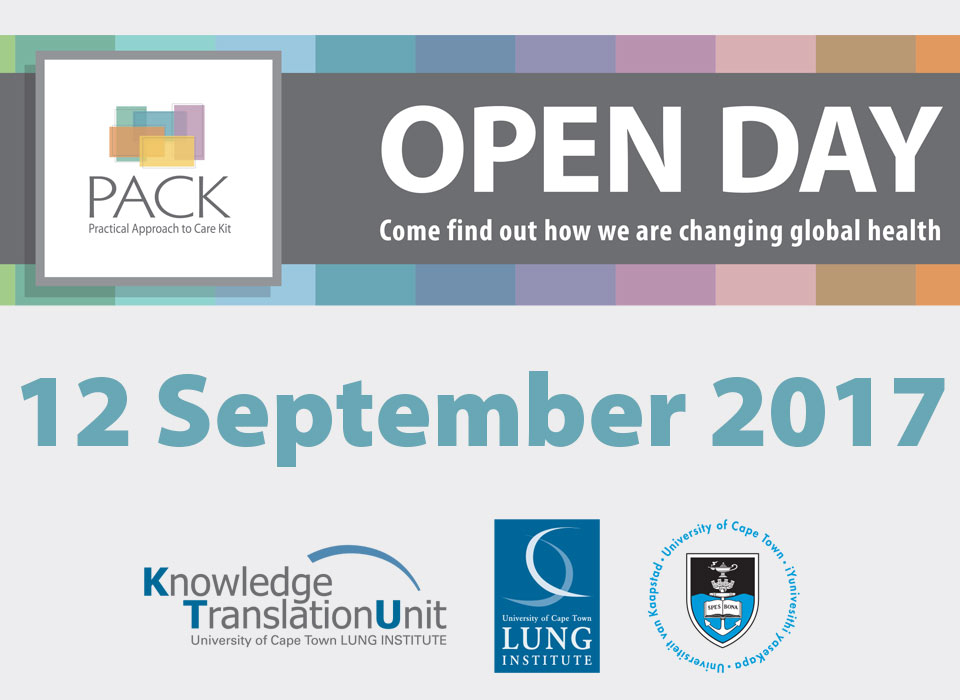Recent awards at the SATS Conference held at Century City conference centre in Cape Town, August 2017
22nd August 2017


PACK Open Day 12 Sept 2017
7th September 2017IN POOR countries people are living longer and healthier lives than ever. Since 2000 child mortality has fallen by almost half. The rate of new HIV/AIDS infections has dropped by 40%. About 7m deaths from malaria have been prevented.
Yet there is much more to be done. By one measure, the World Health Organisation reckons about 400m people still have no access to primary care—the basic form of medicine that should be at the forefront of any well-run health system. The real figure is probably much higher. And even for those fortunate enough to see a general practitioner, or more usually a semi-trained medic or quack, treatment is often dire.
The poor state of primary care will matter even more as the burden of disease in poor countries comes to resemble that in rich ones, shifting from infectious diseases to chronic conditions (see article). By 2020 non-communicable diseases will account for about 70% of deaths in developing countries. But the majority of people with high blood pressure, diabetes or depression do not get effective treatment—and may not even know they have a problem. They deserve better.
Primary health care is not flashy, but it works. It is the central nervous system of a country’s medical services—monitoring the general health of communities, treating chronic conditions and providing day-to-day relief. It can ensure that an infectious disease does not become an epidemic. Before the Ebola outbreak of 2014, nearly half of Liberians could not afford primary care and the deadly virus spread quickly. In parts of west Africa with better primary care, it was more easily contained.
Neglect of primary care is often the unintended result of good intentions. International aid-givers have concentrated much of their effort on cutting the rates of individual infectious diseases, partly because success at treating them is easier to measure. Governments in many developing countries, meanwhile, have ploughed scarce money into visible—and expensive—hospitals in big cities. Between 2002 and 2013 the number of larger hospitals in China nearly doubled, whereas the tally of primary-care providers shrank by 6%. China now has more hospital beds per person than America.
Such lopsidedness is wasteful. Primary care can deal with the vast majority of medical consultations. Expanding primary care tends to bring marked improvements. Brazil’s “Family Health Programme”, which costs barely $50 a person and covers roughly half the population, has cut infant mortality and needless hospitalisation. Rwanda, Sri Lanka and Thailand have had similar success. Costa Rica spends far less than the global average on health, but has the highest life expectancy in the Americas after Canada and Chile, thanks to its impressive primary care.
There are plenty of good examples to follow. The first step should be to train those already providing care, who are often private practitioners, ranging from drug dispensers to dubious healers. Some medical bodies would like to see care-providers without formal medical qualifications banned, but the evidence is that even short training courses can greatly improve their diagnoses. In South Africa a scheme called the Practical Approach to Care Kit (PACK) uses checklists to train health workers without medical degrees to diagnose 40 common symptoms and treat 20 chronic conditions.
A second step is to make better use of technology. In Delhi’s 158 mohalla (community) clinics, the first of which opened in 2015, a testing-kit costing $640 can run 33 common medical tests. Rwanda is trying out a telemedicine scheme to make it easier for patients in rural areas to speak to a doctor. DHIS 2, a free, open-source system for collecting and sharing health data, is used in 47 countries.
A third important change is to design better incentives. Even when clinicians know how to deal with patients properly, they may not do so. Sometimes pressure from patients leads them to overprescribe antibiotics. The problem is made worse when doctors profit from the drugs they prescribe or the tests they order. Better to follow Rwanda, where health workers are rewarded for following clinical guidelines, not for the prescriptions they issue.
Reading the vital signs
In much of the rich world, ageing populations and new technology are leading policymakers to rethink their health services. Many have belatedly realised that, for chronic conditions, there are better and cheaper alternatives to hospitals. Poorer countries have a chance to anticipate these changes. They should seize it.
This article appeared in the Leaders section of the print edition under the headline “The right treatment”
Read more The Economist, 24 August 2017




